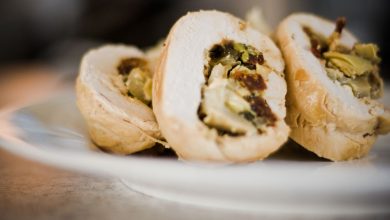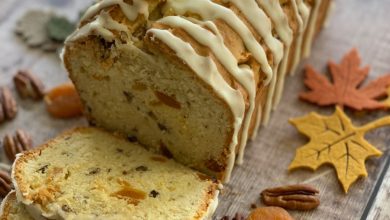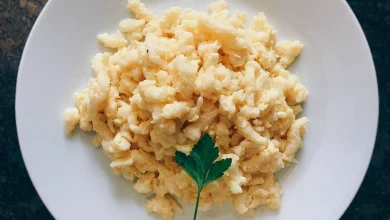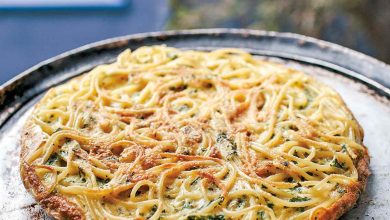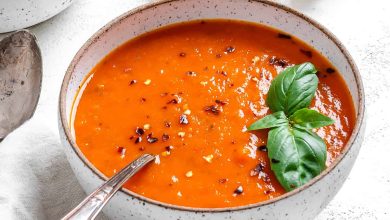Introduction
Welcome to Love With Recipes, your ultimate destination for detailed and comprehensive culinary guides. Today, we delve into the rich, nutty, and irresistibly sweet world of Almond Bark Buttercream Frosting—a luscious frosting that elevates any cake or cupcake to gourmet status. This frosting combines the decadent flavor of almond bark with the creamy, velvety texture of traditional buttercream, resulting in a versatile topping that complements a wide array of baked goods. Whether you’re preparing a special occasion cake, decorating cupcakes for a celebration, or simply craving a delicious treat, this almond bark buttercream will impress with its balanced sweetness and rich almond aroma. Throughout this extensive guide, you’ll find all the information necessary to master this frosting—covering equipment, ingredients, techniques, tips, and nutritional insights—ensuring your baking experience is as enjoyable and successful as possible.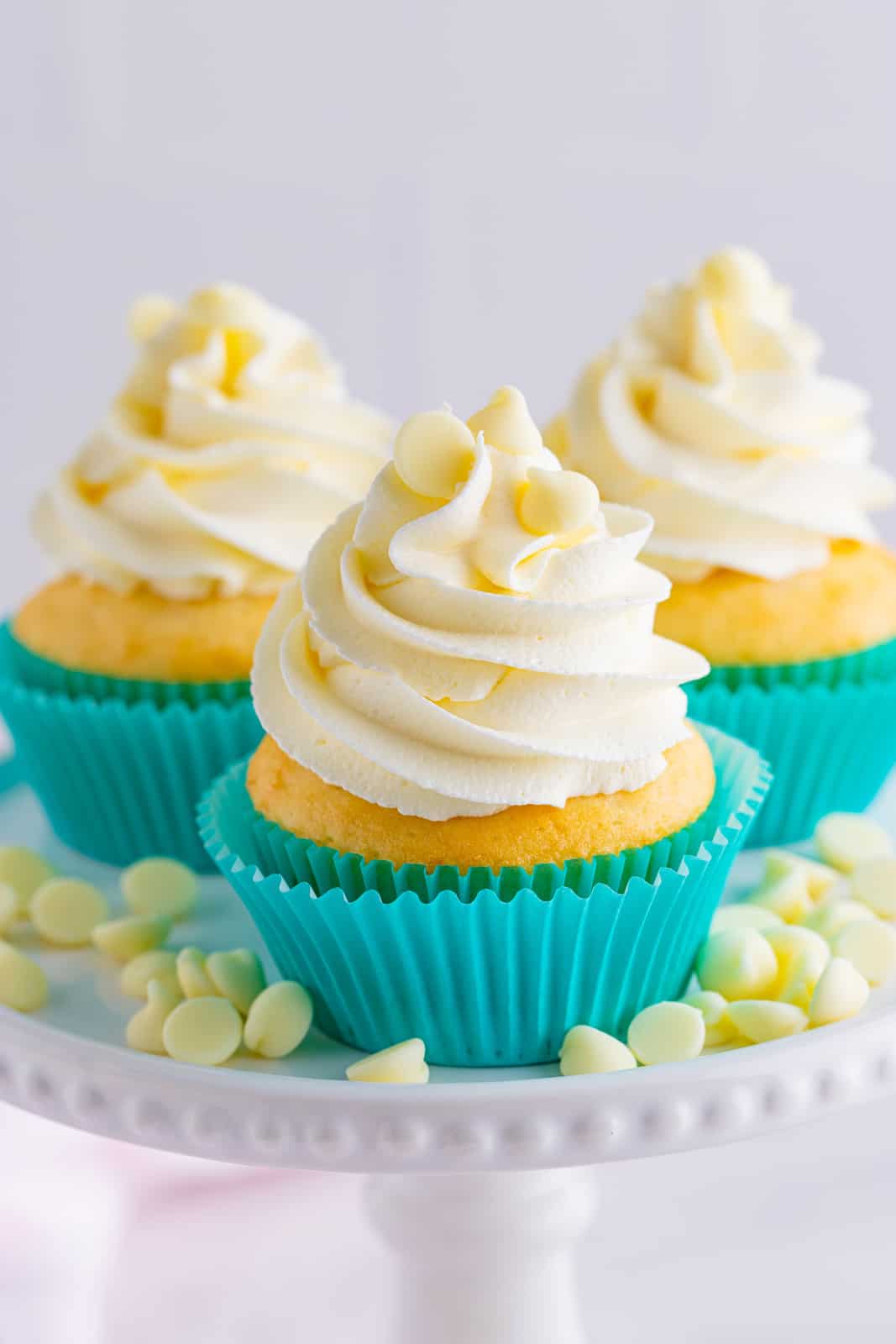
Estimated Preparation Time
Total preparation time is approximately 20 minutes, with an additional 10 minutes of optional chilling if you prefer a firmer consistency. This timing includes gathering ingredients, mixing, and final frosting assembly, making it ideal for both quick baking sessions and more leisurely weekend projects.
Needed Equipment
- Stand mixer or hand-held electric mixer—for creaming butter and mixing ingredients thoroughly.
- Mixing bowls—preferably metal or heat-resistant glass, to combine ingredients.
- Microwave-safe bowl or double boiler—for melting almond bark evenly and safely.
- Rubber spatula—for scraping down the sides of bowls and folding ingredients gently.
- Measuring cups and spoons—for precise measurement of ingredients.
- Cooling rack—to allow melted almond bark to reach the ideal temperature before incorporation.
- Piping bags and decorating tips—optional, for intricate decorating and piping designs.
- Silicone baking mat or parchment paper—for placing frosting if needed during preparation.
- Food thermometer—optional, for ensuring melted almond bark reaches a stable temperature.
Tags
#dessert #frosting #buttercream #almondflavor #baking #cakedecorating #cupcakes #homemade #sweet #nutty
Serving Size
This recipe yields approximately 2 cups of frosting, enough to generously frost a 9-inch round cake or about 24 cupcakes with a standard swirl. Serving size is typically considered 2 tablespoons per serving, making it suitable for approximately 12-14 servings depending on application thickness.
Difficulty Level
This recipe falls under the Intermediate category. It requires basic understanding of melting ingredients, mixing techniques, and frosting consistency adjustments. Novice bakers can succeed with patience and attention to detail, while experienced bakers will find this recipe straightforward with opportunities for customization.
Allergen Information
| Allergen | Contains | Notes |
|---|---|---|
| Nuts | Yes (almond bark contains almonds) | Check labels for potential cross-contamination or nut-free alternatives. |
| Dairy | Yes (butter) | Suitable for those with dairy allergies if dairy-free butter is used. |
| Sugar | Yes (powdered sugar, almond bark) | High sugar content; consume in moderation. |
| Gluten | No | Typically gluten-free unless additives are present. |
Dietary Preference
This frosting is suitable for vegetarian diets. It is not vegan-friendly due to the butter, but can be adapted with plant-based substitutes for a vegan version. Always check ingredient labels for additives or potential allergens.
Course
Dessert / Frosting / Cake Decoration
Cuisine
American
Ingredients
| Ingredient | Quantity | Notes |
|---|---|---|
| Unsalted Butter | 1 cup (2 sticks) | Softened to room temperature for optimal creaming. |
| Powdered Sugar | 4 cups | Sifted to prevent lumps and ensure smooth texture. |
| Milk | 1/4 cup | Adjust for desired consistency; use whole milk or dairy substitutes. |
| Almond Bark | 1/2 cup | Melted and cooled before incorporating into frosting. |
| Almond Extract | 1 teaspoon | Enhances almond flavor; optional but recommended. |
Detailed Instructions
Step 1: Preparation of Ingredients
Begin by measuring out all ingredients precisely. Ensure butter is softened to room temperature—this facilitates easier creaming and incorporation. Sift powdered sugar to eliminate lumps, resulting in a silky smooth frosting. Melt the almond bark carefully to avoid burning, and allow it to cool slightly before use, as hot almond bark can cause the frosting to seize or curdle.
Step 2: Cream the Butter
Place the softened butter into a large mixing bowl. Using a stand mixer fitted with the paddle attachment or a hand-held electric mixer, beat the butter on medium speed for about 2-3 minutes until it appears light, fluffy, and pale yellow. This process incorporates air, giving the frosting a light texture. Scrape down the sides of the bowl periodically to ensure even mixing.
Step 3: Incorporate Powdered Sugar
Gradually add the sifted powdered sugar, about 1 cup at a time, while continually mixing on low speed to prevent a cloud of sugar from erupting. Once each addition is combined, increase the speed to medium and beat for about 1 minute to fully incorporate. Repeat until all powdered sugar is added. The mixture should be thick, smooth, and well combined. This step is crucial for achieving that signature buttercream consistency.
Step 4: Add Almond Extract
Pour in the teaspoon of almond extract. This potent flavoring enhances the nutty profile of the frosting. Mix on low to incorporate thoroughly, then increase to medium-high for about 30 seconds to evenly distribute the flavor.
Step 5: Incorporate Melted Almond Bark
Ensure the almond bark has cooled to approximately 90-100°F (32-38°C)—warm enough to blend but not hot enough to melt the butter. Gradually pour the melted almond bark into the buttercream mixture in a slow, steady stream while mixing on low. This allows the almond bark to emulsify smoothly into the frosting, imparting its characteristic flavor and a slight sheen.
Step 6: Adjust Consistency with Milk
Assess the frosting’s thickness. For a stiffer consistency suitable for piping decorations, use less milk. To make the frosting more spreadable, add milk a teaspoon at a time, mixing well after each addition. The goal is a silky, smooth texture that holds its shape but is easy to spread or pipe.
Step 7: Final Beat for Fluffiness
Increase mixer speed to high and beat the frosting for an additional 2-3 minutes. This aerates the mixture, making it light and fluffy, perfect for decorating. The frosting should be creamy, with peaks that hold well when piped.
Step 8: Frosting Readiness and Application
Transfer the finished frosting into a piping bag fitted with your preferred tip or use a spatula for spreading. Apply immediately to your cooled baked goods or refrigerate if not used right away. If refrigerating, let the frosting come to room temperature and re-whip briefly before using to restore its creamy texture.
Preparation Tips
- Use high-quality almond bark for the best flavor and smoother melting properties.
- Cooling the melted almond bark is essential to prevent the frosting from becoming thin or separating.
- Room temperature ingredients ensure easier blending and a uniform texture.
- Adjust sweetness by varying powdered sugar slightly to suit personal preferences.
- Experiment with flavors by adding a hint of vanilla or other nut extracts for a personalized touch.
Nutritional Information
| Nutrient | Per Serving (2 tbsp) |
|---|---|
| Calories | 150 kcal |
| Total Fat | 10 g |
| Saturated Fat | 6 g |
| Trans Fat | 0 g |
| Cholesterol | 25 mg |
| Sodium | 30 mg |
| Total Carbohydrates | 16 g |
| Sugars | 15 g |
| Protein | 0 g |
Tips and Tricks
- Temperature control: Melting almond bark at low power in short bursts prevents burning and ensures smoothness.
- Coloring options: Incorporate natural or gel food coloring for vibrant colors suitable for themed cakes.
- Flavor variations: Add a splash of vanilla, hazelnut, or coconut extract for unique twists.
- Texture adjustments: For a fluffier frosting, whip it longer; for a denser finish, reduce whipping time.
- Storing the frosting: Keep covered in an airtight container at room temperature for up to 24 hours or refrigerate for longer storage.
Add-ons and Variations
- Chocolate Drizzle: Drizzle melted dark or milk chocolate over the frosting for a layered flavor and visual effect.
- Colorful Sprinkles or Edible Glitter: Decorate the frosting with festive sprinkles for special occasions.
- Nuts and Fruits: Garnish with chopped almonds, pecans, or candied fruit for added texture.
- Vegan Version: Substitute dairy butter with plant-based margarine or coconut oil, and check almond bark for vegan certification.
Side Dishes
- Fresh fruit slices such as strawberries, bananas, or apple slices complement the sweetness of the frosting.
- Crunchy cookies or biscotti serve as delightful accompaniments or bases for frosting application.
- Other baked goods like muffins or scones can be topped with this frosting for enhanced flavor.
Improvements and Customization
- Flavor infusions: Mix in espresso powder, cinnamon, or citrus zest for complex flavor profiles.
- Texture control: For a lighter frosting, incorporate whipped cream or mascarpone cheese, folding gently into the base.
- Color customization: Use natural dyes like beet juice or turmeric for health-conscious coloring.
- Healthier options: Replace part of the powdered sugar with coconut sugar or use reduced-fat butter for a lighter version.
Save and Store
To preserve your almond bark buttercream frosting, store it in an airtight container in the refrigerator for up to 5 days. Before reusing, bring it to room temperature and re-whip for a smooth, fluffy consistency. For longer storage, freeze in a sealed container for up to 1 month. Thaw overnight in the refrigerator and re-whip as needed before application.
Frequently Asked Questions (FAQ)
Can I make this frosting vegan?
Yes, by substituting dairy butter with vegan margarine or coconut oil and ensuring the almond bark is plant-based, you can create a vegan version. Always check labels to confirm allergen information and ingredients.
How do I prevent the frosting from becoming too soft or runny?
Ensure the melted almond bark is cooled sufficiently before incorporation. Adjust the amount of milk carefully, adding small quantities until the desired consistency is achieved. Chilling the frosting briefly can also help firm up the texture.
Is this frosting suitable for piping decorations?
Yes, once whipped to a fluffy consistency, it holds well on piped decorations. For more intricate designs, refrigerate the frosting briefly to firm up before piping.
Can I add food coloring to this frosting?
Absolutely! Use gel or natural food coloring for vibrant or pastel shades. Mix thoroughly to achieve uniform color throughout the frosting.
Conclusion
The Almond Bark Buttercream Frosting is a versatile, flavorful, and visually appealing addition to your baking repertoire. Its rich almond flavor pairs beautifully with vanilla, chocolate, or citrus-infused cakes, and its smooth, creamy texture makes decorating a pleasure. By understanding the nuances of ingredient preparation, mixing techniques, and flavor customization, bakers can tailor this frosting to suit any occasion—be it a birthday, wedding, or casual gathering. Remember that precise measurements, temperature control, and patience are key to achieving professional-quality results. With Love With Recipes guiding your culinary journey, you are equipped to create delectable confections that delight friends and family alike.
References
- “Almond Bark,” The Food Lover’s Companion, 2023.
- “Buttercream Frosting Techniques,” Wilton.com, 2022.

